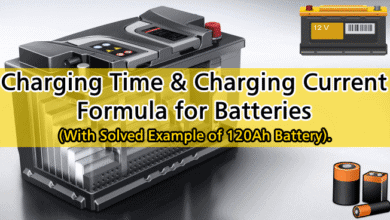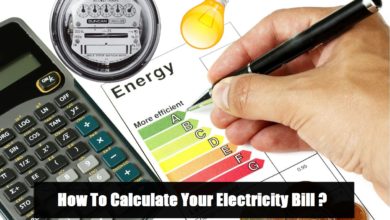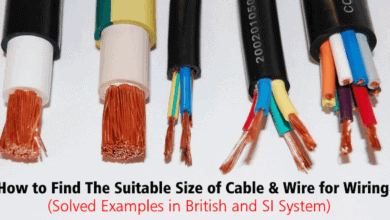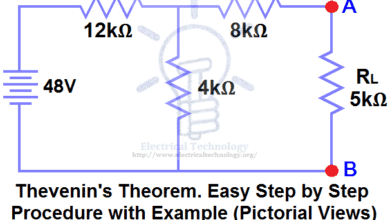What Will Happen If You Connect a Male-to-Male Plug Between Outlets
What Would Happen If We Connect a Male-to-Male Plug Between Two Electrical Outlets or Sockets?
A double male or male-to-male plug or extension cord is a cable with two male prongs on both ends. These cords are also known as “widowmakers” or “suicide cords” due to the extreme danger they pose. They create a severe risk of electrical shock because both ends can become live when plugged in. This is why such cords should never be made, used, or considered for any purpose. Instead, always use approved and safe alternatives that comply with electrical safety regulations.
What Could Happen If You Connect Two Outlets Using a Male-to-Male Plug?
Connecting a male-to-male plug between two outlets is an extremely dangerous practice and is strongly discouraged.
Scenario 1: In Phase (Correct Polarities)
If a male-to-male cord is connected between two separate outlets with correct polarities (i.e., phase-to-phase and neutral-to-neutral), you are effectively creating two loops within the wiring. This scenario does not result in a short circuit or immediate hazard since creating a loop within a wire is not inherently problematic.
However, this does not mean the setup is entirely safe. The exposed male prongs of the second outlet will become energized when the first plug is connected, posing a significant risk of electrical shock if touched accidentally. This danger underscores why male-to-male cords are never recommended.
Scenario 2: Out-of-Phase Circuits
In the United States, 120V and 240V outlets are clearly marked for phase and neutral connections (120V circuits) or two hot terminals (240V circuits).
If the outlets involved are powered by different circuits, such as:
- The first 120V outlet connected to Hot 1 (Black) and neutral.
- The second 120V outlet connected to Hot 2 (Red) and neutral from the same 240V panel.
In this case, the two outlets are 180° out of phase because they are supplied from opposite sides of the transformer. If load is connected to both outlets, the connected appliances may not work properly. Moreover, if fault occurs on a single outlet, it will affect the second outlet as well because it creates parallel paths for the flowing current. Consequently, load connected to both outlets may shut-off if the associated breakers trip.
If a double-male plug is mistakenly connected to the 240V outlets described above, it can create a severe short circuit, potentially leading to electrocution, burns, or a dangerous fire hazard.
Scenario 3: Same Phase but Different Circuits
If both outlets are on the same phase but supplied by different circuits, connecting them with a male-to-male cord will not create an immediate short circuit. However, the connected circuits may become interlinked, creating alternate current paths during a fault. This process may confuse the breakers and prevent them from tripping during a fault.
Faulty breakers or sustained high current in the circuit can cause the cord or wiring insulation to overheat and ignite. Hence, this practice is extremely dangerous and can result in electric shock, equipment damage, or catastrophic fire hazards to the entire wiring system and property.
- Related Post: Why Do Prongs in Electrical Plugs Have Holes in Them?
Scenario 4: Miswired Causing to Short
If one outlet is miswired (phase and neutral wires reversed), connecting these out-of-phase outlets via a male-to-male extension cord will result in a dead short circuit between the 120V phase and neutral, potentially causing:
- Breaker trips if the circuit breakers are functioning correctly.
- Severe overheating, insulation damage, and potential fire hazards if the breakers fail to respond to the fault current.
In countries other than the U.S., where outlets and their terminals may look identical for both phase and neutral connections, the risk increases. For example:
- The first outlet is connected to breaker 1 and is wired correctly.
- The second outlet is connected to breaker 2 but is miswired (phase and neutral reversed).
Connecting these outlets via a male-to-male cord creates an immediate short circuit, tripping both breakers. If one or both breakers are faulty, the cord may overheat, leading to a fire.
In case of 240V circuits and outlets when the same situation occurs, the short circuit will cause the breaker to detect the high current and trip immediately. If the breaker malfunctions or fails to trip, the cable insulation may burn, creating a serious fire hazard.
- Related Post: What are the Tiny Cylinder in Power Cords & Cable?
Precautions and Dangers Associated with Male-to-Male Plugs:
Never use a male-to-male plug. The risks to life and property far outweigh any perceived convenience. Always follow safe electrical practices and consult a professional when in doubt
- The male ends of the plug will have exposed prongs. If the plug is energized, touching these prongs will result in a high risk of electrocution.
- The prongs on one end become live as soon as the other end is plugged into an outlet.
- Outlets are not designed to receive power from another outlet. This setup could lead to unbalanced power flow and cause overload the wiring and lead to damage, overheating, or a fire hazard.
- If one outlet is on a different circuit or breaker, the mismatch could create dangerous overcurrents.
- If there is any miswiring, this configuration can lead to short circuits. A short circuit generates extreme heat, potentially causing fires.
- In some cases, people attempt this dangerous setup to power circuits during an outage (e.g., connecting a generator to a house’s wiring). This can result in backfeeding, where electricity flows in the opposite direction of its intended path.
- Backfeeding can energize utility lines, posing a lethal risk to utility workers trying to restore power.
- This practice violates the National Electrical Code (NEC) and most local electrical regulations.
- It is unsafe and could result in legal and financial consequences if it causes property damage or injury.
What Should You Do Instead?
- If you need to connect power from one source to another, use properly rated transfer switches or equipment specifically designed for the task.
- For backup power needs, install a generator inlet box and work with a licensed electrician to ensure safety.
Related Posts & Resources:
- Why Earth Pin is Thicker and Longer in a 3-Pin Plug?
- Why Don’t Birds and Squirrels Get Electrocuted on Power Lines?
- Why Does the Heating Element Glow but Not the Cord of Heater?
- Difference Between Socket, Outlet and Receptacle?
- Why are US Homes Wired Using Solid Wire rather than Stranded Wire?
- Stranded Wire vs Solid Wire. Which One is Best and Why?
- What Happens When an AC Line Touches a DC Line?
- What are the Colored Aerial Marker Balls on Power Lines For?
- Why Can’t a 12V Car Battery Electrocute You?
- What Happens if a Battery is Connected to the AC Supply?
- What Happens to the Battery with Reverse Polarity Wiring Connection
- Why Can’t We Store AC in Batteries instead of DC?
- Why Do Electronic Circuits Use DC Current instead of AC?
- Why A.C needs more insulation than D.C at same Voltage Level?
- What Happens if We Connect a Polar Capacitor the Wrong Way?
- Which One Kills – Current or Voltage and Why? Amps vs Volts
- Which One is More Dangerous And Why? AC or DC ?
- Which One is More Dangerous? 120V or 230V and Why?
- Is Lightning AC or DC?











